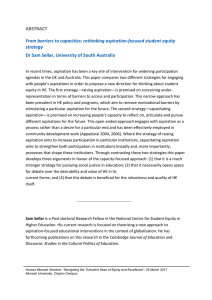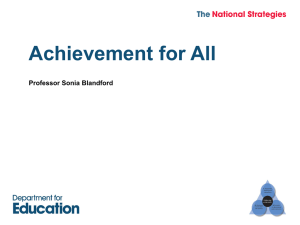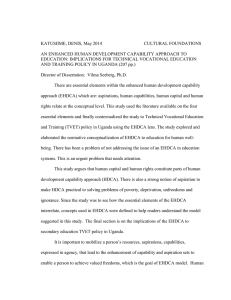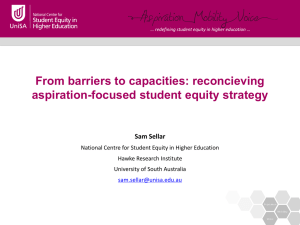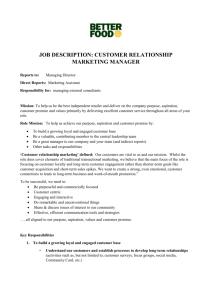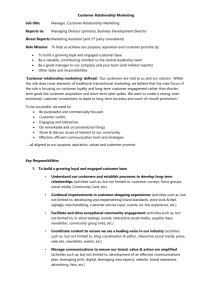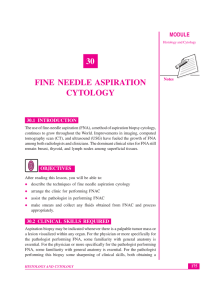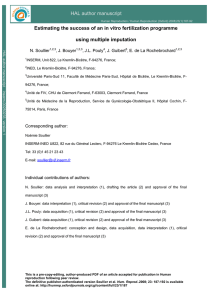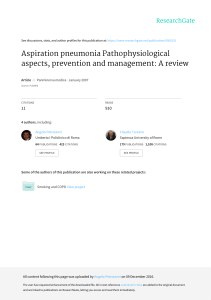charge document
advertisement
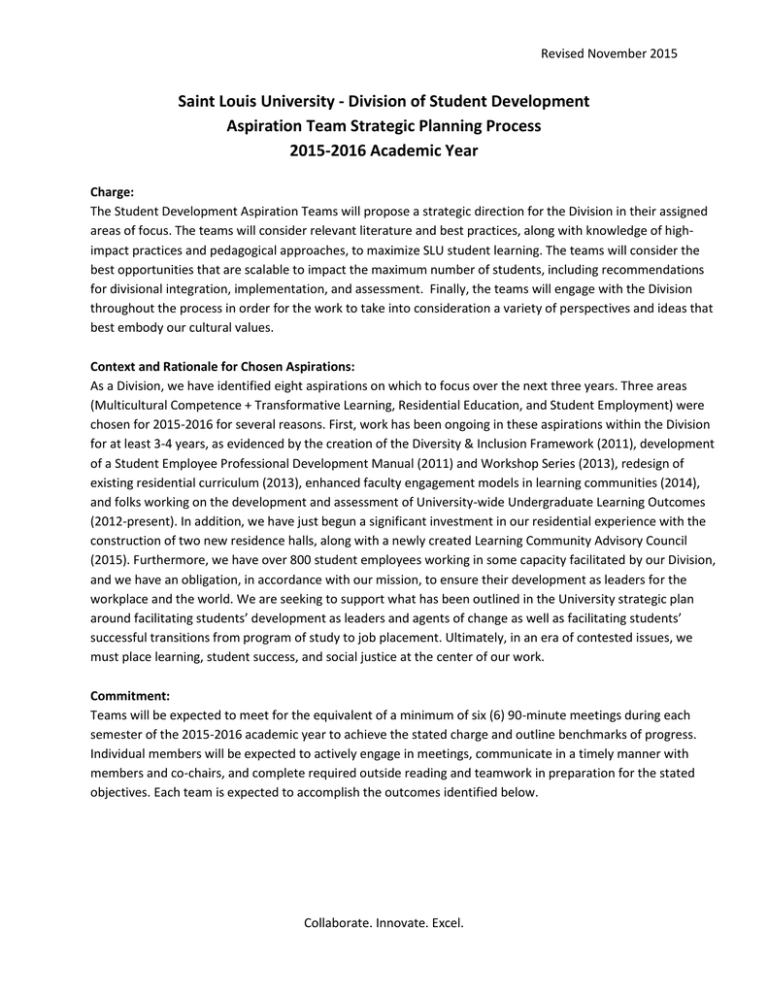
Revised November 2015 Saint Louis University - Division of Student Development Aspiration Team Strategic Planning Process 2015-2016 Academic Year Charge: The Student Development Aspiration Teams will propose a strategic direction for the Division in their assigned areas of focus. The teams will consider relevant literature and best practices, along with knowledge of highimpact practices and pedagogical approaches, to maximize SLU student learning. The teams will consider the best opportunities that are scalable to impact the maximum number of students, including recommendations for divisional integration, implementation, and assessment. Finally, the teams will engage with the Division throughout the process in order for the work to take into consideration a variety of perspectives and ideas that best embody our cultural values. Context and Rationale for Chosen Aspirations: As a Division, we have identified eight aspirations on which to focus over the next three years. Three areas (Multicultural Competence + Transformative Learning, Residential Education, and Student Employment) were chosen for 2015-2016 for several reasons. First, work has been ongoing in these aspirations within the Division for at least 3-4 years, as evidenced by the creation of the Diversity & Inclusion Framework (2011), development of a Student Employee Professional Development Manual (2011) and Workshop Series (2013), redesign of existing residential curriculum (2013), enhanced faculty engagement models in learning communities (2014), and folks working on the development and assessment of University-wide Undergraduate Learning Outcomes (2012-present). In addition, we have just begun a significant investment in our residential experience with the construction of two new residence halls, along with a newly created Learning Community Advisory Council (2015). Furthermore, we have over 800 student employees working in some capacity facilitated by our Division, and we have an obligation, in accordance with our mission, to ensure their development as leaders for the workplace and the world. We are seeking to support what has been outlined in the University strategic plan around facilitating students’ development as leaders and agents of change as well as facilitating students’ successful transitions from program of study to job placement. Ultimately, in an era of contested issues, we must place learning, student success, and social justice at the center of our work. Commitment: Teams will be expected to meet for the equivalent of a minimum of six (6) 90-minute meetings during each semester of the 2015-2016 academic year to achieve the stated charge and outline benchmarks of progress. Individual members will be expected to actively engage in meetings, communicate in a timely manner with members and co-chairs, and complete required outside reading and teamwork in preparation for the stated objectives. Each team is expected to accomplish the outcomes identified below. Collaborate. Innovate. Excel. Revised November 2015 TIMELINES AND OUTCOMES Checkpoint #1: October 28 (Division Leadership Meeting) #1: November 18 DL Meeting for MC+TL #2: January 27 (Division Leadership Meeting) #2: February 24 DL Meeting for MC+TL #3: March 23 (Division Leadership Meeting) #3: April 28 DL Meeting for MC+TL #4: May TBD (Division Leadership Summer Workshop) Process Step 1: Foundation Work ● Team-building using StrengthsQuest ● Conduct environmental scan/SWOT analysis ● Identify critical definitions and theoretical foundations ● Identify best practices among peer and Jesuit institutions ● Review existing division input (reflection exercise, leadership workshop info.) ● Identify list of critical stakeholders Work Product (Outcome) Succinct and focused information to Division Leadership (one-page document, no more than six (6) slide presentation). Step 2: Draft Action Plan ● Create draft division-level action plan, including checklists and an assessment plan ● Conduct preliminary assessment (e.g., focus groups with students) or pilot projects as needed to inform action plan A document outlining recommended actions for the Division to take related to the aspiration over the next 12-24 months. The document should include specific tasks needed for each action as well as an assessment plan to identify how we’ll know we’ve accomplished what has been identified. Step 3: Finalize Action Plan ● Finalize action plan ● Identify and seek feedback on action plan from stakeholders ● Identify division champions and key campus partners Final action plan document with task lists, assessment plan, and key champions and partners identified. Step 4: Division Integration and Implementation ● Identify what is needed to make the action plan come to fruition ● Reporting and analysis of action plan Implementation document: Identify where and how we need to change to make the action plan possible and identify immediate next steps (e.g., form a new/revised committee to carry on the work). Collaborate. Innovate. Excel. Revised November 2015 CRITICAL QUESTIONS Each team should provide written answers to the critical questions listed below at each checkpoint in the process. The purpose of this is to provide an opportunity for reflection and documentation of your work. Questions may be revised based on the process. Step 1 (October 28): ● What are the strengths, weaknesses, opportunities, threats to pursuing a scalable program for this aspiration? ● What are the critical definitions that frame this aspiration? ● What is the critical literature that helps frame this aspiration? ● What makes this aspiration high impact? ● Are there models of “best practice” or aspirational programs to which we should benchmark specifically? Step 2 (January 27): ● What do we want students to know and be able to do (e.g., learning outcomes)? Why are these important? ● What will this aspiration look like in 2018? What stories do we want to tell about our impact on students in this area? ● What are the action steps to achieve this/these goal(s)? Step 3 (March 23): ● What can we achieve as a Division? ● What will constitute success at the division level? ● How many students can we impact? ● Among various stakeholders, who have emerged as our champions within the Division? Who are our key campus partners within the University? Who are our key partners in the STL Community? Who are key knowledge communities within higher education? How can we incorporate feedback from these groups? ● What have we learned about our Division capacity to achieve this plan? What knowledge, skills, abilities, or resources do we need? ● What will serve as evidence that we have made an impact? Step 4 (May 2016): ● What does Division integration mean for this aspiration? How can we ensure sustainability? ● Does everyone in the Division understand what we are seeking to accomplish? ● What needs to change in the Division to make the action plan come to fruition? ● How do the recommended actions align with our values of collaboration, innovation, and excellence? Collaborate. Innovate. Excel.
